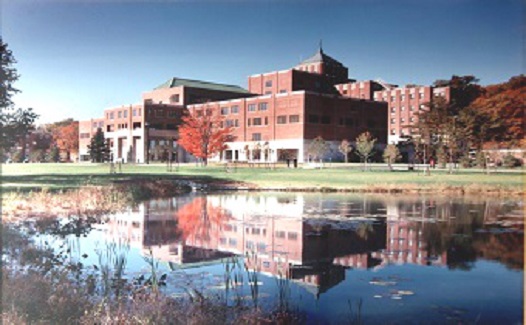STATE OF MAINE
PROBATE COURT
COURT ST.,
SKOWHEGAN, ME
SOMERSET, ss
NOTICE TO CREDITORS
18-A MRSA sec. 3-801
The following Personal Representatives have been appointed in the Estates noted. The first publication date of this notice November 21, 2024. If you are a creditor of an Estate listed below, you must present your claim within four months of the first publication date of this Notice to Creditors or be forever barred.
You may present your claim by filing a written statement of your claim on a proper form with the Register of Probate of this Court or by delivering or mailing to the Personal Representative listed below at the address published by the Personal Representative’s name a written statement of the claim indicating the basis therefore, the name and address of the claimant and the amount claimed or in such other manner as the law may provide. See 18-C M.R.S. §3-804.
2024-081 – Estate of RICHARD L. WEYMOUTH, late of St. Albans, Maine deceased. Jodianne L. Weymouth, 146 Ripley Road, St. Albans, Maine 04971 appointed Personal Representative.
2024-343 – Estate of LELAND B. HILLS, late of Solon, Maine deceased. Teresa Anne Hills, 417 Brighton Road, Solon, Maine 04979 appointed Personal Representative.
2024-345 Estate of LESLIE ELIAS-HENDSBEE, late of Madison, Maine deceased. Bruce Hendsbee, 29 Myrtle Street, Madison, Maine 04950 appointed Personal Representative.
2024-346 – Estate of DWIGHT W. FOOTE, JR., late of Carmichael, California deceased. Kathleen Newton Foote, P.O. Box 276, Rockwood, Maine 04478 appointed Personal Representative.
2024-347 – Estate of COLLEEN E. BRADSTREET, late of Hartland, Maine deceased. Taylor Bradstreet, 8 Hill Crest Drive, Clinton, Maine 04927 appointed Personal Representative.
2024-348 – Estate of JONATHAN G. CAYFORD, late of Athens, Maine deceased. Samantha J. Reid-Oliver, 16 Emerald Acres Drive, Madison, Maine 04950 and Mackenzie J. Cayford, 69 Mallard Road, Madison, Maine 04950 appointed Co-Personal Representatives.
2024-349 – Estate of RONALD K. SARNER, late of New Portland, Maine deceased. Elliott Barden, Sr., P.O. Box 363. Temple, Maine 04984 appointed Personal Representative.
2024-350 – Estate of WAYNE L. PARLIN, late of Madison, Maine deceased. Travis Parlin, 3 Andrea Ave., Benton, Maine 04901 appointed Personal Representative.
2024-351 – Estate of PATRICIA HUGHEY, late of Jackman, Maine deceased. Karen Finnegan, P.O. Box 65, Jackman, Maine 04945 appointed Personal Representative.
2024-355 – Estate of JACQUELINE L. PIO, late of Palmyra, Maine deceased. Dustin Pio, 9 Eastland Ave., Millinocket, Maine 04462 and Brian Scott, 784 Warren Hill Rd., Palmyra, Maine 04965 appointed Co-Personal Representatives.
2024-356 – Estate of MARK G. WALRAVEN, late of Brighton, Maine deceased. William Walraven, 60 Justine Road, Plymouth, Massachusetts 02360 and Mark A. Walraven, 49 Blue Gill Lane, Plymouth, Massachusetts 02360 appointed Co-Personal Representatives.
2024-357 – Estate of ARTHUR A. GAGNE, SR., late of Canaan, Maine deceased. Shawn Gagne, 15 Warren Ave., Canaan, Maine 04924 appointed Personal Representative.
2024-363 – Estate of EDWARD A. WILLS, late of San Bernardino, CA deceased. Lewis Wills, 919 River Road, New Portland, Maine 04961 appointed Personal Representative.
2024-364 – Estate of APRIL M. PALMER, late of St. Albans, Maine deceased. Bridget Gould, 511 Rome Road, Rome, Maine 04963 appointed Personal Representative.
2024-365 – Estate of SCOTT B. LUDDEN, late of Hartland, Maine deceased. Rosalie DeRaps, 262 Ford Hill Road, Hartland, Maine 04943 appointed Personal Representative.
2024-366 – Estate of JANUSZ A. JANKIEWICZ, late of Skowhegan, Maine deceased. Beata J. Jackson and Jeffrey Jackson, CMR 402 Box 1961, APO AE 09180 appointed Co-Personal Representatives.
2024-372 – Estate of FREDERICK J. FOSS, SR., late of Norridgewock, Maine deceased. Holly Mullen, 13 Colonial Lane, Condo #8, Norridgewock, Maine 04957 appointed Personal Representative.
TO BE PUBLISHED November 21, 2024 & November 28, 2024
Dated: November 24, 2024
/s/Victoria M. Hatch,
Register of Probate
(11/28)
STATE OF MAINE
PROBATE COURT
41 COURT ST.
SOMERSET, ss
SKOWHEGAN, ME
PROBATE NOTICES
TO ALL PERSONS INTERESTED IN ANY OF THE ESTATES LISTED BELOW
Notice is hereby given by the respective petitioners that they have filed petitions for appointment of personal representatives in the following estates or change of name. These matters will be heard at 10 a.m. or as soon thereafter as they may be on December 4, 2024. The requested appointments or name changes may be made on or after the hearing date if no sufficient objection be heard. This notice complies with the requirements of 18-C MRSA §3-403 and Probate Rule 4.
2024-368 – BRYSYN JAMES CLARK. Petition for Change of Name (Adult) filed by Brysyn J. Clark, of 49 Pleasant Street, Hartland, Maine 04943, requesting name to be changed to Brysyn J. Clark-Stoots for reasons set forth therein.
2024-371 – DARCY MADELINE LITTLE. Petition for Change of Name (Adult) filed by Darcy M. Little, of 1430 Main Street, Pittsfield, Maine 04967, requesting name to be changed to Damien Mosher Little for reasons set forth therein.
Dated: November 21, 2024
/s/ Victoria Hatch,
Register of Probate
(11/28)






 The North Pond Association of Mercer, Rome and Smithfield, is ho- ho- hosting a wonderful opportunity for you to be the highest bidder on gifts for holiday gift giving season! (Of course these items make great birthday, anniversary, wedding gifts, and more, as well.)
The North Pond Association of Mercer, Rome and Smithfield, is ho- ho- hosting a wonderful opportunity for you to be the highest bidder on gifts for holiday gift giving season! (Of course these items make great birthday, anniversary, wedding gifts, and more, as well.) Once again, the Living Community Foundation is in the running for the annual crowdfunding grant from the Maine nonprofit,
Once again, the Living Community Foundation is in the running for the annual crowdfunding grant from the Maine nonprofit, 



